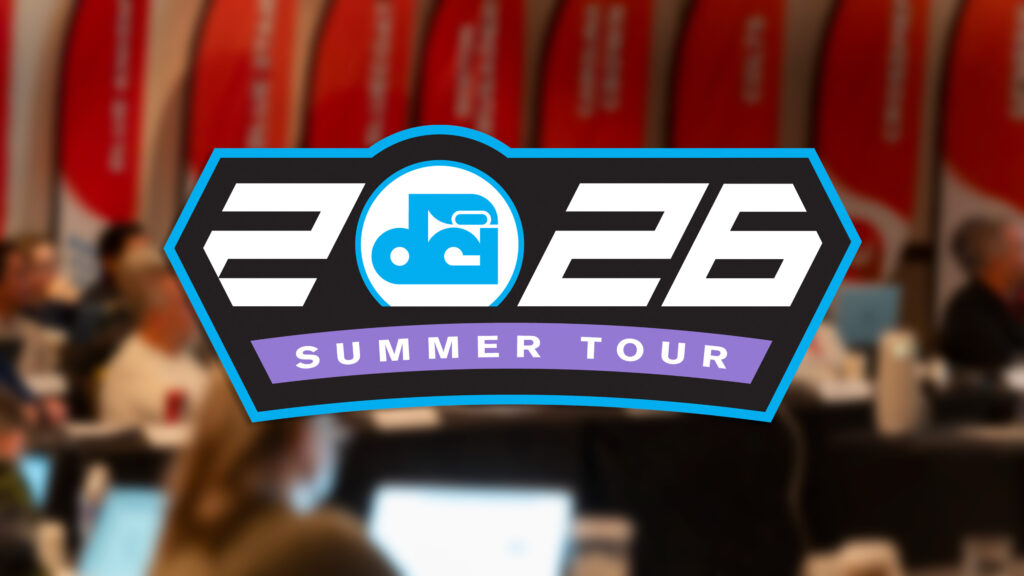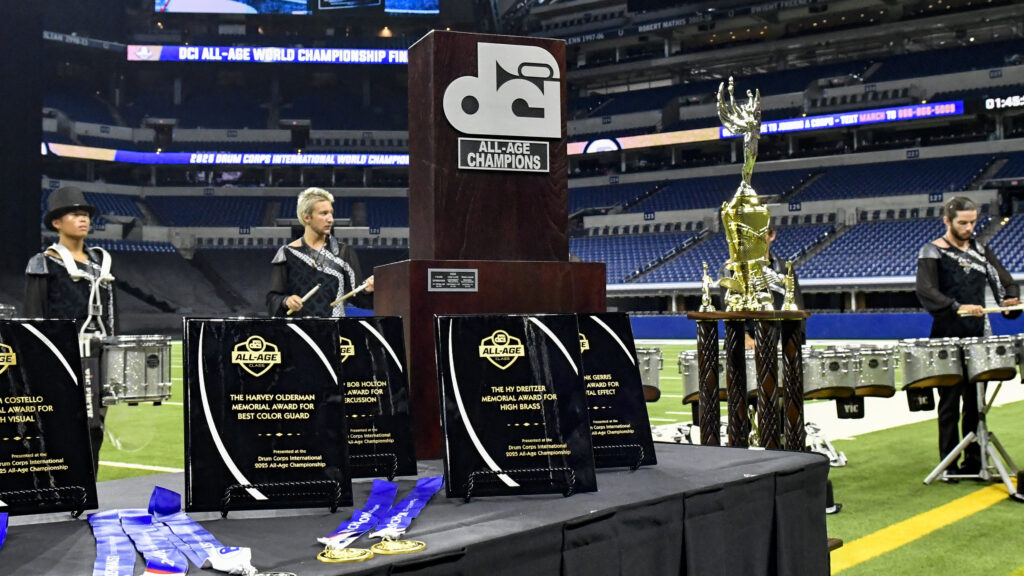The following interview ran in the Boston Crusaders’ newsletter, Giant Steps Giant Steps: As the Boston Crusaders percussion caption head for the past three years, you have made a very personal impact on the corps. How would you describe the Boston Crusaders approach to marching percussion and what makes it different from the programs at other corps?

Rich Viano: The answer is twofold. First, we place an enormous emphasis on building our members’ character and integrity so that they leave our program with something other than great chops. Our program teaches young men and women to be accountable, to be part of a team, to support one another, and to be part of a process that requires patience and dedication. The character piece requires our members to focus on their personal preparation and their own dedication to the team musically and emotionally.
Second, from a musical standpoint we nurture their musicianship, so that their contribution to the program goes beyond raw drumming. We teach them to understand and apply expression, nuance, pacing, showmanship, while at the same time harnessing the aggressive nature inherent in drummers. And we do all of that without the fear-based teaching techniques, such as push-ups, you often associate with the activity. The accountability factor is the cornerstone by which we choose our members, so their character has more to do with making the program successful than their ability to play. Talent is great; but talent plus selfish ego equals disaster. So we try to find people who are looking at music as more of a journey than a destination. Music is a never-ending learning process, and that goes for myself as well.
Giant Steps: Just about all of the staff on the Boston Crusaders’ creative team, including yourself, marched together in Suncoast Sound in the 1980s. Were there any experiences from your marching days that influence your approach to drum crops today?
Rich Viano: Absolutely. In 1984 the corps had a free day in Washington D.C. Our show was designed to draw focus on several emotional issues with regard to the Vietnam War. Robert Smith wrote a moving piece of music called “Requiem.” On the field, the color guard assembled a rendering of the Vietnam Memorial. It was very a very moving moment in drum corps. On this free day, we scheduled a performance of “Requiem” on the real Vietnam Memorial. The entire horn line was spread out across the entire “Wall.” Unscheduled, no audience waiting, a complete random idea put into action. By the end, we had drawn a sizable crowd and stirred up a lot of emotion.
That single moment changed my life forever. The staff at Suncoast had found a way to connect its performers and design concepts to the point of unity. Suncoast was very unique in that it was built as a family in the purest sense of the word. I can look through the corps photos from the years that I marched and name probably 90 percent of the members from every year I marched. We were a very tight group and we had our competitive philosophies in check. We were always treated as adults and allowed to express ourselves.
Today, in Boston, we continue to focus on the potential of the group so that the value of the summer experience has nothing to do with the corps’ final placement. Genuinely, all of the Suncaost alumni that teach the Boston Crusaders today were, and remain, very close friends. When I look at Boston today, I see the same thing. The kids realize that the friendships that they make and their shared experience of supporting each other all summer long transcend the competitive aspect of the activity.
Giant Steps: I was wondering if you could talk about the other arrangers and musicians that influence your writing for the corps?
Rich Viano: This is a long list. I would have to start with the designers of Suncoast, first and foremost: Robert (Smith), Al (Murray), Karl (Lowe), etc. These people taught me more about emotion in art than I could ever comprehend.
Dennis DeLucia is a huge influence on me. Dennis was and is the kind of teacher that never becomes bored with questions or answers. We have talked for years about density, grooves, flow charts, timbres, showmanship and kids. His friendship and knowledge are two things I cherish greatly.
I have long admired Thom Hannum and his talents. I have had the good fortune of spending pockets of time with him and listening a lot. Thom is a huge influence on many arrangers and teachers in the activity.
Quite honestly, all of the current writers are influences too. If you ask my peers, I am always taking interest, asking questions and learning from all of the writers in the activity. I don’t believe watching and enjoying other corps products is a sign of weakness. It’s the total opposite. As a community, we are making great art. Why wouldn’t you want to see someone else’s work? It’s motivating.
Giant Steps: Could you explain the process of creating the percussion book for the corps and how you work with the other members of the creative team?
Rich Viano: Howard Weinstein and Kevin Ford drive our design team. The Crusaders are an “effect-based” design team. We focus on connecting with our audience through total coordination of our moments. The days of “here is the horn score, go write ratta-tat-tat” are long over. The music is sculpted to match the pacing and payoff of the effect. The role of percussion in our product is very diverse. Each segment of the show requires different needs and my job is to score a book that matches the potential of each segment. With all of that said, we are in constant contact with each other and always willing to turn the crystal to refract a potential new color.
The major difference in design now compared to when I marched is that today the design process is almost completely electronic. We use notation programs, sequencers, samplers, digital editing software, PDF files, digital cameras, videos and e-mail. Each of the designers can live in a separate place in the country and we can still be as in touch as if we were next-door neighbors. We use a lot of MIDI playback to keep each other informed of what we are doing, and that allows us to trim down errors before we get to camp and teach the material to the members. Sending a part change to a kid is as easy as “point, drag and click.” I won’t even begin to explain the value in a cell phone.
Giant Steps:How long does it take to write and notate a complete first draft of the percussion book?
Rich Viano: That really depends to be honest with you. Deadlines have a funny way of influencing how fast you can write. The reality is that design has a lot to do with the success of the group and you have to consider the talent level of the players, placement on the field, pacing of an effect, etc. It’s a lot to think about. It is an art of fine-line dancing. Once an idea is clear, writing it down takes very little time. Most of the time involved is in experimenting with possibilities.
Giant Steps: How did the staff come up with the concept for this year’s show?
Rich Viano: The thought process for doing an original show was driven by Kevin Ford. We’ve done a lot of “juxapositioning” over the years where we’ve melded and blended themes through manipulation of common denominators. And to a large degree that approach leaves the world of arranging and orchestrating and gets into composition. We have used a lot of composed elements in Boston’s shows over the last few years and we’ve had a lot success with those moments in our shows.
The idea of color came from Kevin and Howard. It creates a lot of variety because color can be interpreted many different ways. The audience can participate as creatively as they want to. Color can be viewed visually, emotionally and aurally. Frank Sullivan has done an outstanding job of writing an original score that will still be very accessible and entertaining to our audiences. “Colored Dynamics” is turning out to be a very exciting production. It’s going to be a great program.





